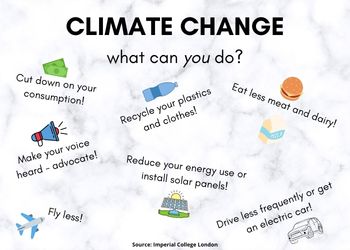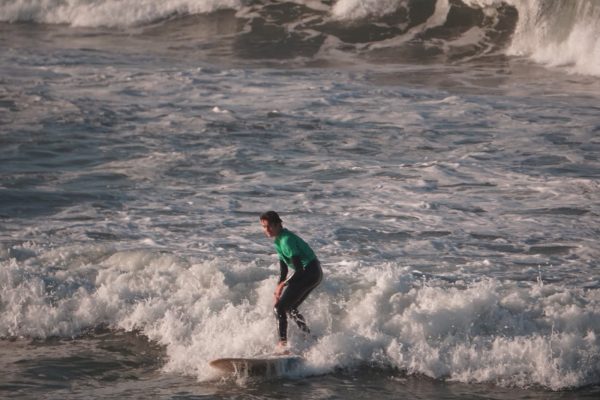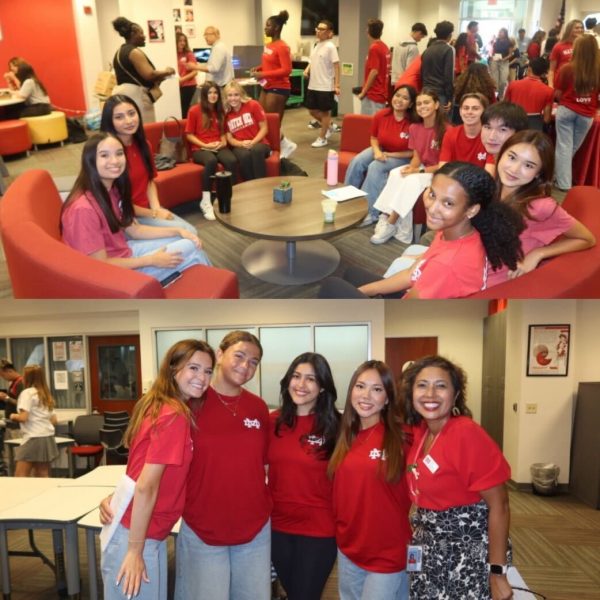The climate crisis: What you need to know and what you can do

The climate crisis has continued to affect every corner of the planet. Though more effort is being made to reverse its effects, such as the recent 2021 United Nations Climate Change Conference, an article from USA Today says humanity is not yet doing enough and the trend of increasing global temperatures is ongoing. In light of heat waves, floods, wildfires, and more intense hurricanes and storms, it is more important than ever to educate oneself on the impact of climate change—not only on humans, but on the entirety of the animal kingdom.
Almost all of us have seen some effect of climate change by now. Whether that be more frequent wildfires or warmer winters, it is clear that climate change has had a large impact on land animals. Zoology teacher Kristeen Stolo explains that it is the amphibians that are most affected by climate change.
“Climate change is affecting amphibians greatly right now because they are so dependent on water,” Stolo said. “Our water is starting to evaporate [and] we’re having droughts. Even in some places – not necessarily here [in California], but other places in the country where it is raining more than normal – they’re getting pushed out of their environments.”
Even though amphibians are the most affected, it doesn’t mean that other organisms are not also experiencing the impact. This human-induced climate crisis is also causing the destruction of habitats for larger mammals.
“You see [how] the polar bears [are] losing their ice caps because they’re starting to melt, and they’re running out of space to do their hunting,” Stolo said. “Walruses [are] walking off the cliffs because they’re running out of ice to haul up on, [so they’re] packed together. They’re starting to compete for space, […] which isn’t necessarily a bad thing because that’s going to cause the stronger to survive — we’re going through survival of the fittest right now.”
Despite bipartisan support for stricter climate measures, according to Pew Research Center, some still feel that global warming, as it relates to the land, is nothing more than a hoax. Stolo, however, finds that this is an outdated and incorrect way of thinking and addressing the situation.
“The evidence supporting data is all out there and it’s been there for years,” Stolo said. “[Scientists] can see the constant uptick of it. I know people are saying it’s just natural and it’s just going up, which is partially true; I mean, we have been warming up for tens of thousands of years since the Ice Age. We’ve been warming up every year, but [humans are] just making it go much faster.”
What skeptics also ignore is climate change’s vast effects on the world’s carbon sink: the ocean. Marine biology teacher Eric Wendland highlights just how the oceans have been altered due to the large amounts of carbon dioxide and other greenhouse gases being absorbed.
“In the ocean, it’s mostly the temperature [that’s making the difference]. When the heat goes into the ocean, it’s raising the temperature. But it takes a lot of heat to raise the ocean [temperature], and that affects our climate here. That’s why we’re seeing stronger storms and things like that because heat gets trapped in the ocean. The more heat, the more difference you have in rising and falling air, and the more intense storms we get. And it’s not just that — it’s affecting distributions of kelp, distributions of coral, and bleaching. Just like humans, animals don’t want to live in a flat desert area; they want to live where there are streets, shelter, and opportunities. And those places provide that. So when [the ocean] heats up and they go away, the animals that live there also go away.”
Wendland doesn’t see the climate situation as something that has no global attention, though. Despite pushback in the past, he said we are now heading towards actual progress.
“Even in the 90s, there was a lot of denial – it was a new science and there was nothing to back it up really other than what we’re starting to see. But it wasn’t like it had a big track record. I think now pretty much everybody’s on board. We are doing way better than I thought. I’m looking forward to carbon capture technology, where we can start pulling carbon out of the atmosphere. I think we’ve made a good start. It is expensive, but it’s also surprising me that everything’s moving away from fossil fuels so quickly. I thought there would be a lot more pushback, but there really hasn’t been so I think humans get it. And you’re always gonna have your holdouts, and people that make stuff up because of their own reasons, but [as a whole], we’re moving in the right direction.”
Many people know about the climate crisis, but are unaware of the best ways to help as an individual. Wendland highlights some of the ways one can do their part in helping the ocean.
“Of course, don’t pollute,” Wendland said. “Anything with carbon dioxide really affects the ocean because that carbon dioxide gets in and it makes it more acidic. Another thing is if you go fishing, make sure if something’s endangered you throw it back or if you can catch it. Really stick to the regulations. One of the big problems off our coast here [in California] was the fish have majorly gone from when I was a kid. We had seen fishing reports and there were hundreds of fish, even 1000s. Now you’ll catch like 30 because we’ve overfished our stocks. We’ve been doing better, especially with apex predators like sharks, which are so protected now. And when those shark numbers come back up, we’re gonna start seeing things like stingrays drop, and we’ll try to get balance back in our ecosystem. But as a whole, live in harmony with the ocean, rather than constantly trying to change it to suit our needs.”
Another marine biology teacher, Sarah Zito, shows another effect that climate change has had on the ocean’s organisms – one which is much more extreme.
“As the oceans get warmer, certain organisms cannot tolerate that change – some of them can only live in very narrow temperature ranges – which means they’re going to have to move somewhere that does have the temperature range that they can live in,” Zito said. “If they can’t move, they’re going to die. And so we’re gonna see a lot more mass extinctions going on with organisms worldwide in our oceans as well as on land. Another thing is that as our earth gets warmer and warmer, our ice caps are starting to melt, which is obviously not a good thing. This actually adds a lot of fresh water into our saltwater environment and it’s diluting certain areas of coastlines where marine organisms […] live. And again, they can’t change. Certain organisms cannot tolerate a change in salinity very well. Our ocean levels are rising, which is affecting terrestrial species, but that’s also changing habitat ranges for other animals that don’t normally have access to certain areas.”
Sometimes when one organism leaves a certain area, another will take over. But as Zito said, in kelp and coral, both keystone species for the marine ecosystem, this is not always the case.
“Kelp is typically a more cold water species,” Zito said. “So as the oceans are warming, we’re actually losing our kelp forests. Algae, on the other hand, is taking over certain areas of coral and that has to do with ocean warming. Also, we’re seeing coral bleaching, which is occurring more frequently. Coral polyps can’t tolerate high temperatures, either. Yes, they’re tropical, but they can only tolerate a certain level of warmth. Once ocean temperatures rise beyond that level of warmth, then, the coral polyps themselves die. Algae takes that over and then the coral reefs just basically dissolve in front of us.”
Zito said that the negatives can be overwhelming, but we cannot ignore the huge strides we are making in the world of technology and innovation. And as more information becomes available to us, we are able to further adapt to these changes.
“We’ve got a lot of advances in technology,” Zito said. “It’s happening rapidly, which is the way technology always trends. You come up with an idea [and] it gets out there. Eventually, over time, advances in that field become faster and faster and better and better. And there’s definitely a lot of opportunity in natural resources that are replenishable, like wind and solar, even nuclear energy is much cleaner and provides a lot more energy output from the input […] Our generations are in a position that we could massively turn things around. It is not too late yet. We are quickly coming up on the point of no return though, [and] we’ve only got a couple of decades where we could actually make some lasting changes and positively impact our planet instead of negatively. So I do think there’s hope. If more people get on board, if we spread the science, if we spread the effects and show people what’s happening and get people to care, there is hope.”
Your donation will support the Student Publications Department at Mater Dei High School. Your contribution will allow us to keep our equipment up to date and cover our annual website hosting costs.








![SETTING THE STANDARD: Mater Dei High School and Playfly Sports announced its historic media partnership in the spring of 2025. As Mater Dei Athletics continues to achieve new heights, Playfly will introduce new partnerships and sponsors for these programs. With the added revenue and resources, Mater Dei can improve the high school experience for all students, while engaging the community in a showcase of Monarch pride. “[This partnership is designed] to increase the experience that our athletes and our non-student athletes have with the [athletic] programs,” Melvin said. “School spirit, engagement, and pride are all things we [keep in mind].” Photo taken by Kenzington Ragge.](https://thescarletscroll.com/wp-content/uploads/2025/09/IMG_0237-600x450.jpeg)